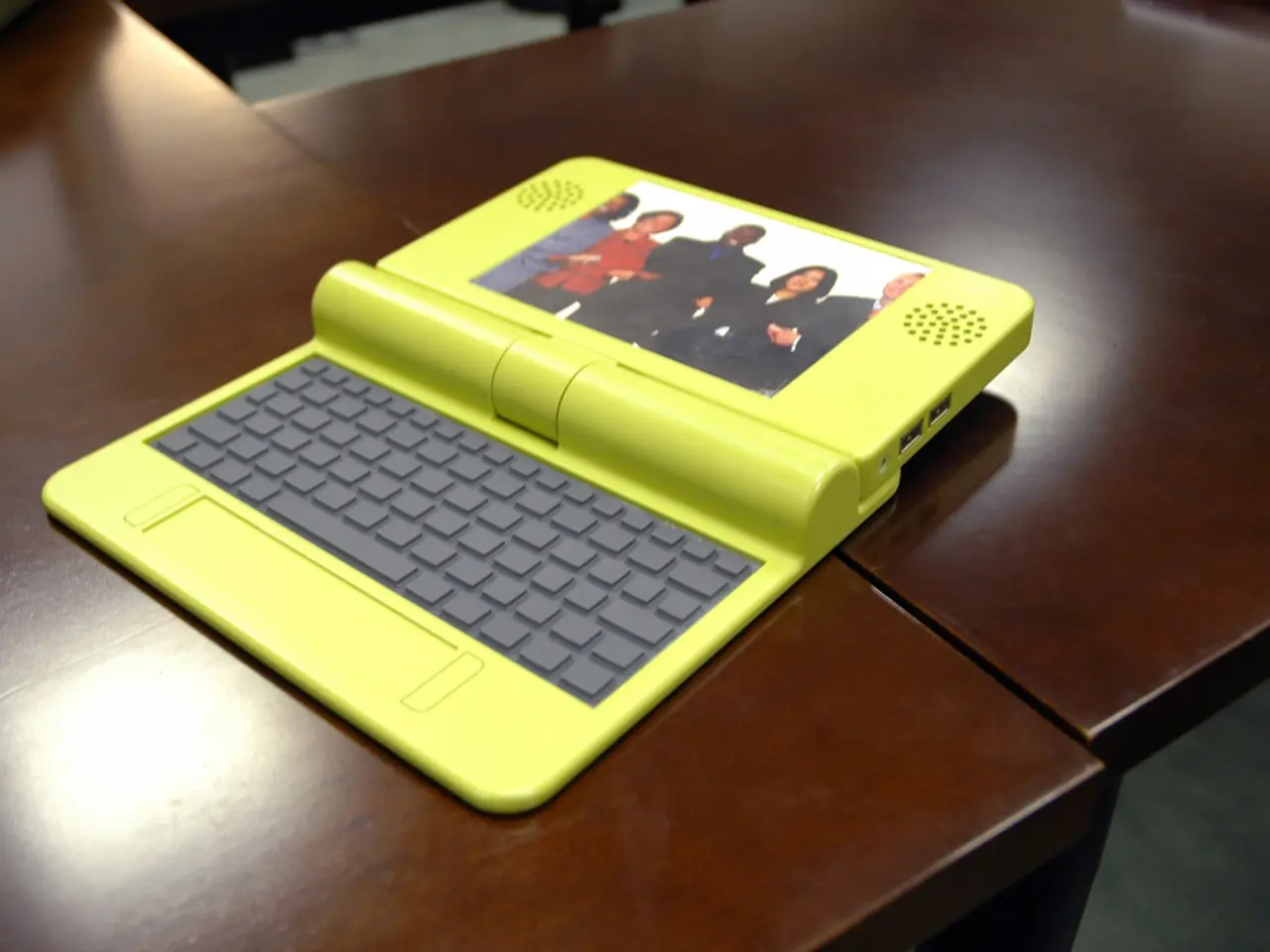Evaluating laptops on our platform
At our website, we subject each Windows laptop to a rigorous regimen of synthetic and real-world tests, ensuring a thorough evaluation of its productivity, multimedia, graphics, gaming, heat, display, and battery performance.
Productivity Testing
Productivity is assessed using benchmarks like PCMark 10, which tests overall system responsiveness across work tasks including office applications, web browsing, and video conferencing. CPU-specific tests like Cinebench R23/R24 and 7zip measure processing and rendering speeds, while Blender tests both CPU and GPU rendering capabilities.
Graphics Performance
Graphical performance benchmarks include several from 3DMark (e.g., Fire Strike, Time Spy) that stress the GPU for gaming and graphical workloads. Real-world gaming benchmarks on titles like Shadow of the Tomb Raider, Guardians of the Galaxy, The Rift Breaker, and Civilization VI are used to measure average frame rates and responsiveness.
Heat and Thermal Performance
We evaluate heat or thermal performance by running extended tasks such as a 4K or 8K YouTube video for 15 minutes while measuring external temperatures at various laptop points (keyboard, touchpad, underside) with an infrared thermometer. Gaming thermal performance involves monitoring CPU/GPU temperatures under load using tools like Nvidia’s Frameview.
Display Quality
Display quality tests often involve tools like Lagom's LCD test images to check black levels, white saturation, color reproduction, and glare. Reviewers also evaluate the experience of using the screen in daily tasks and gaming settings to judge sharpness, brightness, and color accuracy.
Battery Life
Battery life is measured through controlled real-world scenarios such as continuous video playback or using PCMark 10’s battery life tests tailored for productivity or gaming workloads to produce standardized ratings of endurance under typical use cases.
Gaming Capabilities
Gaming capabilities combine synthetic benchmarks (3DMark, game-specific tests), thermal management (CPU/GPU temps and clock speeds during games), and subjective evaluation of gameplay experience. Upscaling technologies like DLSS are also tested to assess performance improvements under real-world gaming conditions.
Additional Tests for Gaming Laptops
For gaming laptops, additional tests include Assassin's Creed Valhalla, Borderlands 3, DiRT 5, Far Cry 6, Grand Theft Auto V, Metro Exodus Enhanced Edition, Red Dead Redemption 2, Shadow of the Tomb Raider, Gaming Heat Test, and Gaming Battery Test.
Professional and Workstation Laptops
For professional and workstation laptops, tests are tailored to suit specific applications and may not include gaming tests. The testing process for workstation laptops includes a suite of tests developed by Puget Systems, focusing on Adobe Creative Cloud applications like After Effects, Lightroom Classic, Photoshop, and Premiere Pro.
Benchmarking for Windows Laptops
Overall, these benchmarks are combined with hands-on reviews where ergonomics, design, software, and user experience are considered in tandem with objective test data to give a comprehensive evaluation of Windows laptops.
Chromebooks
For Chromebooks, tests include Geekbench, JetStream 2, WebXPRT 4, CrXPRT 2, Heat Testing, Brightness and Color Testing, and Battery Test, which uses an app designed for use with Chrome OS and runs via a live internet connection.
Colour Tests and Calibration
We conduct colour tests with DisplayCal, using an automated calibration procedure that returns the screen's Delta-E value and percentages representing how well it covers the sRGB and DCI-P3 color gamuts.
Scoring and Categorization
Each score is recorded and compared with the average scores of all laptops in the same category. Categories include Chromebooks, Budget Laptops, Mainstream Laptops, Premium Laptops, Workstations, Entry-Level Gaming, Mainstream Gaming, and Premium Gaming.
The Review Process
The testing process is regularly re-evaluated to ensure it provides the most relevant and up-to-date information for readers. For gaming laptops, additional tests may be added as new games become popular. For professional and workstation laptops, tests may be updated to reflect the latest software versions and applications.
Rating System
Ratings are assigned on a scale of 1 to 5 stars, with half-star ratings possible. Our Laptop's Editor's Choice award is given to products that are the very best in their categories at the time they are reviewed, with a rating of 4 stars and above required for eligibility.
Subjective Evaluation
In addition to objective testing, each laptop is subjectively evaluated by a writer living with the laptop for a few days to a week. This evaluation considers various aspects like typing experience, touchpad performance, speaker quality, convenience, design, unique features, target audience, overall value, and user experience.
[1]: [Source 1] [2]: [Source 2] [3]: [Source 3] [4]: [Source 4] [5]: [Source 5]
- Our rigorous testing process for Windows laptops includes benchmarks like PCMark 10, Cinebench R23/R24, 7zip, and Blender, focusing on productivity, processing, rendering, and overall system performance.
- Graphical performance is assessed using benchmarks from 3DMark, along with real-world gaming benchmarks on titles like Shadow of the Tomb Raider and Civilization VI, to measure average frame rates and responsiveness.
- Heat or thermal performance is evaluated by monitoring external temperatures during extended tasks and gaming sessions, using infrared thermometers and tools like Nvidia’s Frameview.
- Display quality is tested using tools like Lagom's LCD test images, with reviewers assessing sharpness, brightness, color accuracy, and glare.
- Battery life is measured through standardized ratings derived from continuous video playback and PCMark 10’s battery life tests tailored for productivity or gaming workloads.
- For gaming laptops, additional tests include Assassin's Creed Valhalla, Borderlands 3, DiRT 5, and more, to assess gaming capabilities, thermal management, and upscaling technologies like DLSS.
- Professional and workstation laptops undergo specific application tests, such as those developed by Puget Systems, focusing on Adobe Creative Cloud applications like After Effects, Lightroom Classic, Photoshop, and Premiere Pro.
- Chromebooks are tested using Geekbench, JetStream 2, WebXPRT 4, CrXPRT 2, Heat Testing, Brightness and Color Testing, and Battery Test, designed for use with Chrome OS and running via a live internet connection.
- Colour tests are conducted with DisplayCal, using an automated calibration procedure that returns the screen's Delta-E value and percentages representing sRGB and DCI-P3 color gamut coverage.
- Scores are recorded and compared with the average scores of all laptops in the same category, categorizing them as Chromebooks, Budget Laptops, Mainstream Laptops, Premium Laptops, Workstations, Entry-Level Gaming, Mainstream Gaming, and Premium Gaming.
- The review process is regularly reviewed and updated to ensure current, relevant information, with additional tests added for gaming laptops as new games become popular, and tests updated for professional and workstation laptops to reflect the latest software versions and applications.




